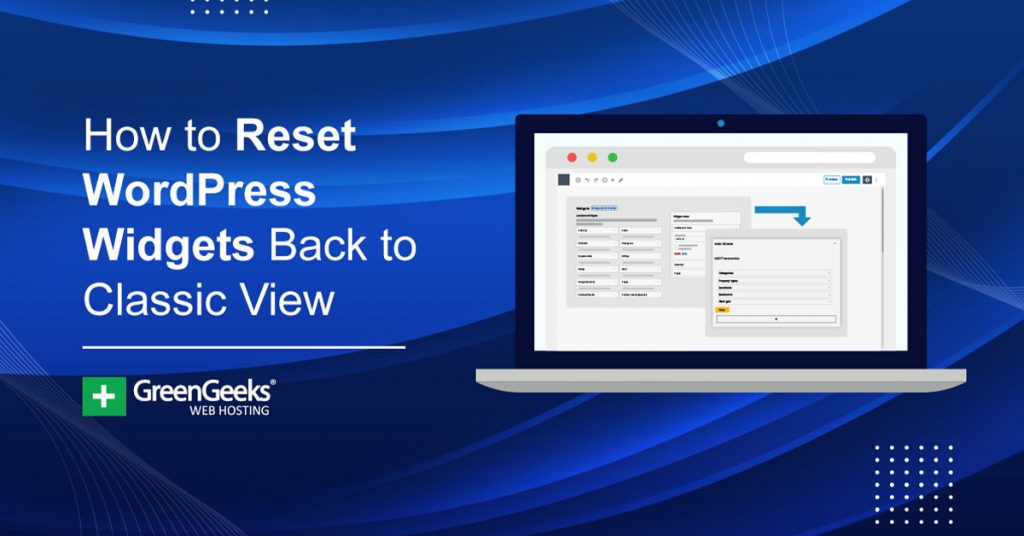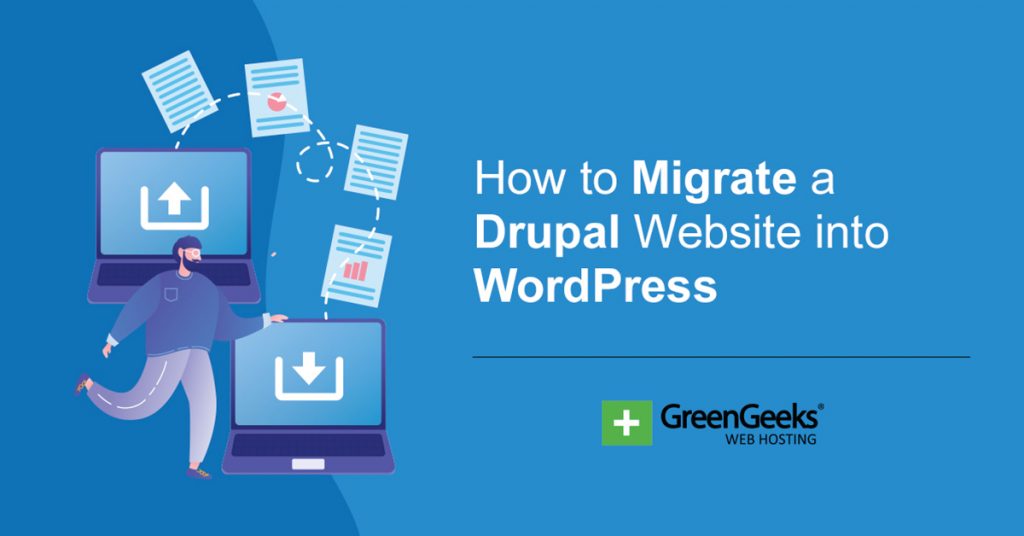When WordPress 5.8 launched, the platform introduced the ability to manage widgets with blocks. While the feature has many advantages over the old widget system, many were quick to seek a way back to the classic WordPress widgets system.
These complaints did not fall on deaf ears. Instead, the WordPress team themselves created a plugin that will allow you to utilize the classic version of widgets. The plugin is named Classic Widgets and works immediately upon activation.
Today, I will demonstrate how to use Classic Widgets, and explain where it won’t work.
This plugin is for:
WordPress 5.9
Plugin: Classic Widget v0.3
Why Did the Widget System Change?
Since the introduction of the Gutenberg editor in WordPress 5.0, the platform has shifted all of its attention to block-based content. Thus, the natural evolution would be to ensure that all content is created through blocks.
As a result, the widget system was converted into a block-based platform.
This allows creators to use both regular blocks and widget-specific blocks in the widget section. Thus, users will have more options than ever when it comes to the widget section, but there’s no denying that the system is different.
That said, it doesn’t mean it is any harder. In fact, some would even say it’s far more intuitive as it operates more closely to the Gutenberg editor itself. In any event, people just don’t like it when things change, thus people want the classic widgets system back in their WordPress.
And with over 1 million active installers, this is one feature that the community was quick to try.
How to Restore the Classic Widgets System in WordPress
Step 1: Install Classic Widgets
Classic Widgets was created by the WordPress team and it is the easiest plugin to use on the platform because there is nothing for you to do besides installing it. The plugin will simply convert your widget section back into the classic system upon activation.
Let’s start by clicking on Plugins and selecting the Add New option on the left-hand admin panel.
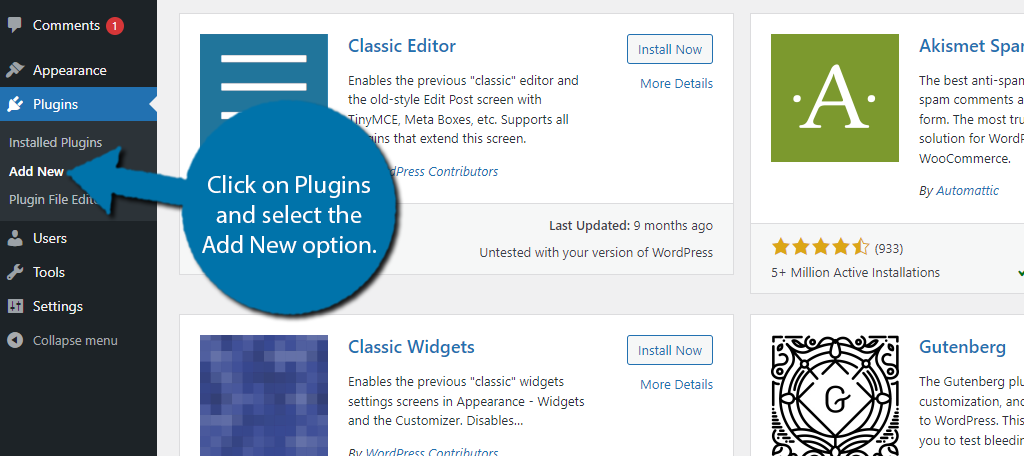
Note: You might notice that Classic Widgets is actually one of the plugins you will see on the front page of the directory. You can actually click on the “Install Now” button here to make it even quicker.
Search for Classic Widgets in the available search box. This will pull up additional plugins that you may find helpful.
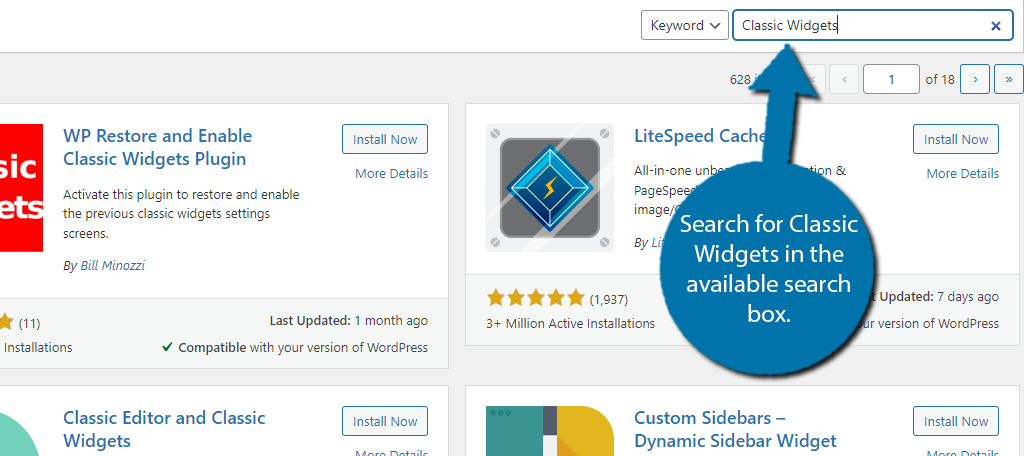
Scroll down until you find the Classic Widgets plugin and click on the “Install Now” button and activate the plugin for use.
Because there are so many available, today we’re focusing on the one by “WordPress Contributors.”
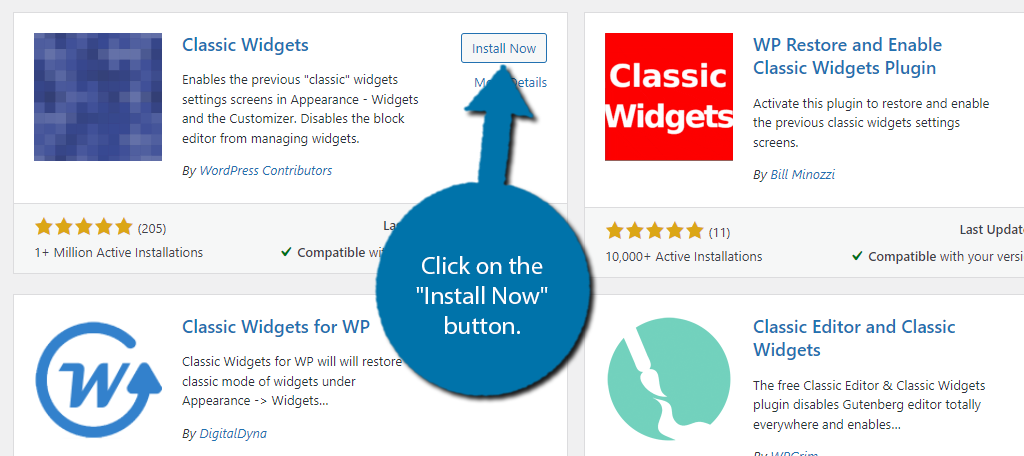
Step 2: Make Sure the Plugin Works
In most cases, you can go to the widget section of WordPress and you will see the classic view of the widget system back in place.
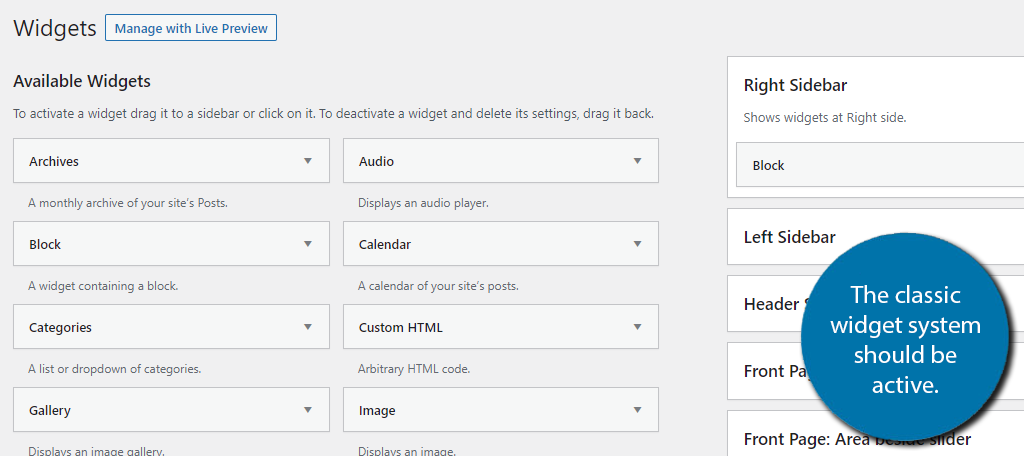
If so, congratulations, however, the plugin has limitations.
You see, WordPress is still evolving and the next big change is coming in the form of editing themes. And in 5.9, the community got to see the first block theme in the form of Twenty Twenty-Two. Yes, even the themes will use blocks now.
These themes do not have a widget system at all, and this plugin will not add one. Those themes are built differently to utilize the site-wide editor feature.
Thus, this plugin will not work on those themes. Granted, there are not many of them at the moment.
Is It Worth Using the Classic Widgets System?
While it is completely viable to fight change and use the classic widget system, the real question is, should you?
To this day, the Classic Editor remains one of the most popular plugins in WordPress. Thus, there is already a precedent that a large chunk of the community does not like the block-based direction of WordPress.
Or at the very least, they don’t want to learn a new procedure. And to be honest, the widget system is no different.
There’s really no downside to not using the new system at the moment. However, that could change in the future due to how themes are evolving. Block themes cannot use the old widget system even with a plugin, and there is a strong possibility they will become the norm.
That said, it could take years for those changes to solidify within the community, but this is valuable time that you could be prepared by learning the new system. But only time will tell.
In either case, it is completely safe to use the classic widgets system without using Gutenberg. The choice is yours.
FAQ
Are There Any Drawbacks to Classic Widget?
No.
The plugin simply restores the classic widget system in WordPress. Everything will still work perfectly fine, with the exception of using a Block-based theme. In those cases, nothing will change, thus installing the plugin is a waste of space.
In summary, your website will work perfectly and you will not see any performance issues arise from using this plugin.
Do I Need to Set Up the Widget Section From Scratch?
No.
Regardless of if you are activating or deactivating the plugin, the widget area will remain unchanged in terms of what is there. You may be wondering how that is.
Basically, the classic editor has a block widget. All of the content will appear within that section. Thus, you won’t lose anything regardless of what direction you go.
That said, some plugins may rely on their widget appearing in the classic format, although it is rare.
In those cases, they may not be able to move into the new system.
What Happens If I Uninstall the Plugin?
The widget section will revert to the block-based iteration once the plugin is uninstalled. The widgets you had in place will still exist and be fully functional. The only exception may be plugins that still require the classic system, but again, those are very rare.
WordPress Has No Limits
Regardless of if you are looking for the cutting edge in terms of new features, or looking to roll back to simpler times, WordPress has you covered. There really is a plugin for every situation and that’s what makes the platform so successful.
It has no limits, which is why it is the most popular CMS on the market.
Why did you want to use the classic widgets system in WordPress? Will you ever embrace a block-based WordPress?

